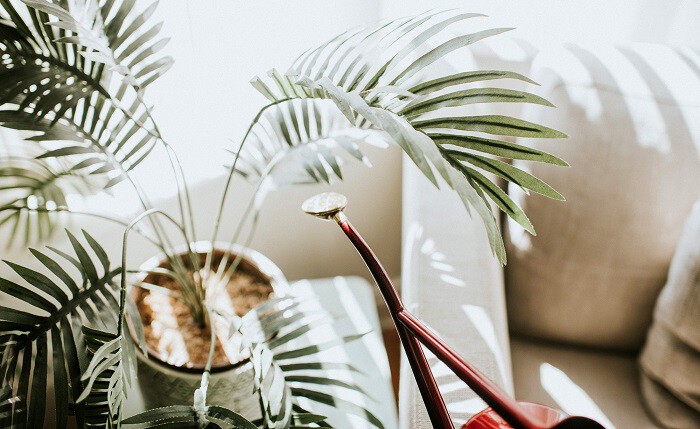Experts share their best tips for creating a vibrant houseplant display inside your home.

Urban green thumbs rejoice: You don't need access to an outdoor space to cultivate your own little slice of nature. With a little effort and the right lighting, you can grow an indoor garden filled with all kinds of interesting plants. "Not all of us have great light in our apartments, but luckily there are a lot of grow light options on the market nowadays that allow us to grow more plants inside," says Summer Rayne Oaks of Homestead Brooklyn.
Along with supplying appropriate lighting for your houseplants, you'll need to be considerate of anything else living in your home, too. "Those with kids and pets will want to look for nontoxic plants—or display plants on high shelves, from hanging baskets, or in other areas where the pets and kids can't reach," notes Melinda Myers, gardening expert and host of the Great Courses' How to Grow Anything series. "The ASPCA has a list of toxic and nontoxic plants, and of course, consulting with your veterinarian [and pediatrician] is always a good idea." Ahead, a few ideas for setting up a lush, but apartment-friendly indoor garden, according to these experts.
Start a mini herb garden.
If you have a windowsill and a pot, Christopher Landercasper, Director of Farming Operations for the Sonoma's Best Hospitality Group, suggests growing a miniature herb garden. "Just put together a couple of basil seeds, cilantro seeds, and a chive transplant (or seeds if no transplants are available) from your local garden center," he says. "The chives will grow the slowest, but when your basil and cilantro are finished with their one summer of production, the chives can take over the pot as a perennial and provide edible flowers and leaves through the fall and into the following year."
Practice with un-killable plants.
If you're a first-time indoor gardener, Meyers says to start with hardier houseplants while you get the hang of things. "Any cactus or succulent, like a jade, will work well for those that have sunny windows or artificial light and don't like to water," she says. "ZZ plants tolerate low light and dry soil, while snake plants like dry soil and bright light—but will tolerate low light [if you stake them]."
Grow strawberries in a hanging basket.
Searching for a space-savvy way to grow fruit inside a small apartment? Landercasper recommends employing a hanging planter. "You can grow strawberries in a pot or hanging basket," he says. "They can be more than happy in the amount of soil available in a medium sized option, and look beautiful hanging when they are ripe."
Consider aquatic plants.
If you have north-facing windows that don't receive much natural sunlight, Oakes says you can place mason jars filled with water and aquatic plants inside your apartment, since they don't require much light to grow. "I have an aquatic plant, called an Anubias, which has just been sitting in a jar of water for years," she says. "I periodically change the water—like once a month or so—and it's just thriving."
Cherry tomatoes can be grown indoors, too.
Dreaming of an indoor vegetable garden that provides delicious food for dinner? Landercasper says that if you have access to direct sunlight, you should plant some cherry tomato seeds. "Cherry tomatoes are excellent plants for balconies and sunny windows," he says. "I really like Matt's Wild Cherry for flavor, and Sun Gold or Pink Bumble Bee for a change of color."